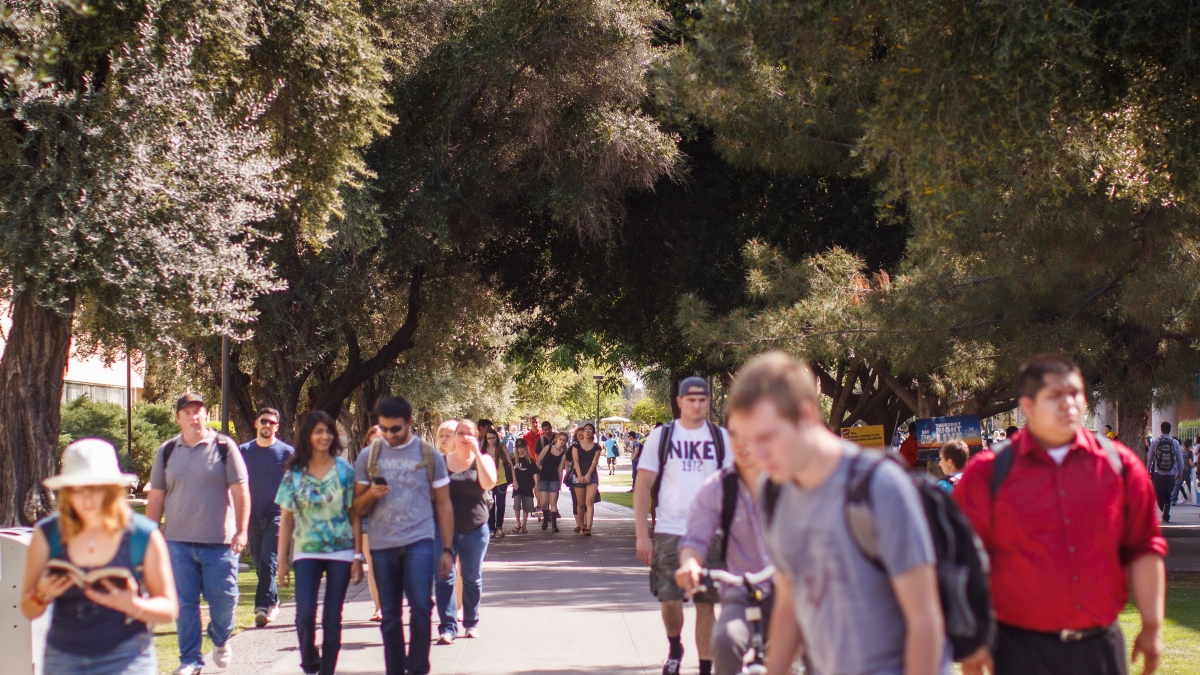Keep safety in mind during school year

Starting a new academic year is a great time to make friends, learn new subjects and keep safety in mind.
The ASU and Tempe Police Departments are involved in several efforts this year that emphasize student safety. Both departments will conduct a joint awareness campaign during the first weeks of school to enforce traffic laws and alcohol violations.
“We hope that ASU students have a safe and productive academic year. The ASU and Tempe Police Departments will work closely together to educate students about safety issues,” said Michael Thompson, acting ASU Police Department chief.
ASU Police personnel participate in many back-to-school activities that welcome students to campus, provide safety information and give students a chance to meet their police department. These include new student orientations, international student orientations, move-in, Welcome Week, the off-campus information fair with the Tempe Police Department and Passport to ASU. The department holds mandatory student safety meetings for students living on campus at the beginning of the school year, and they host on average more than 100 events per year where officers educate students about alcohol.
The ASU Police Department is also focusing this year on preventing sexual violence in conjunction with the Tempe Police Department. As the first university police department in Arizona to sign the national “Start by Believing” proclamation in support of victims of sexual violence, the ASU Police Department will work with Tempe police, university departments that serve students and ASU students on this effort.
Traffic and pedestrian safety is another high priority during the first weeks of school. High-traffic focus areas include University Drive and College Avenue, Apache Boulevard and College Avenue, and Apache Boulevard and McAlister Avenue. Traffic warnings will be provided during the first week. After that, tickets will be issued for violations.
Emergency information
Students, faculty and staff are encouraged to add or update their mobile numbers to receive ASU Alert text messages.
ASU Alert is used during major emergencies and incidents that greatly affect university operations. ASU Advisory is considered a tier below ASU Alert, and communicates situations that may not be life threatening and typically affect certain areas of a campus.
To provide or verify your mobile number, follow these steps:
• Visit asu.edu/go/phonemaintenance to manage phone numbers.
• Select mobile as “Phone type.”
• Click “save” to add or update.
To modify Alert and Advisory subscriptions:
• Visit http://www.asu.edu/bbconnect-sso.
• Click subscriptions on the left, then edit button next to the subscription.
• Click “save” when done.
More information may be found at alerts.asu.edu.
Keep your bike safe
September is the month when most bike thefts occur on and around campus, according to the ASU Police Department. It’s best to use two locks to keep your bike safe – a U-lock to secure the bike to a stationary object, and a cable lock to doubly secure it and lock the wheels to the frame.
Learn how to keep your bike safe by watching a video demonstrating how to properly secure it. In addition, ASU Police uses bait bikes equipped with GPS systems to catch thieves, and the department encourages students, faculty and staff to register bikes at cfo.asu.edu/bike.
Safety tips
Additional basic safety tips that members of the ASU community should keep in mind:
• Call 911 in an emergency. Call boxes highlighted at the top by a “blue light” dial directly into an emergency communication center and can be used during any emergency. If you are using a cell phone, give your location.
• Lock your doors. Do not prop doors open. Warn others against leaving their doors open or unsecured.
• When going out, let others know what your plans are and where you will be so they know where to look for you if something should happen.
• Be aware of your surroundings.
• Don’t leave valuable items in your car.
• Properly secure your bike to an authorized rack.
• Watch for passing trains. Never trespass on the tracks or jaywalk across the rails.
• Don’t give personal information to someone you don’t know.
• If someone demands your property, give it to them and immediately contact the police.
• If you are traveling at night, use the buddy system.
A free safety escort service is available on the Tempe campus. Call 480-965-1515 to arrange for an escort. For an escort on another campus or after hours of operation, call ASU Police at 480-965-3456, and an officer or police aide will provide an escort.
Additional information about staying safe at home, at parties, while driving and in other situations may be found at http://cfo.asu.edu/police-tips.
More information about the ASU Police Department is available at http://cfo.asu.edu/police.